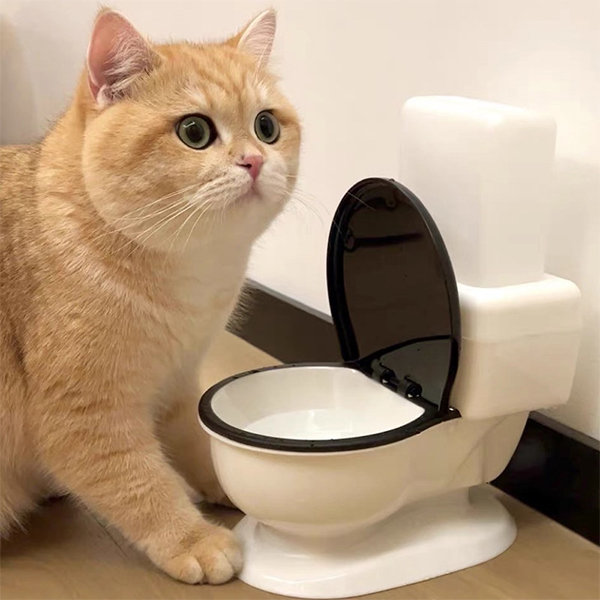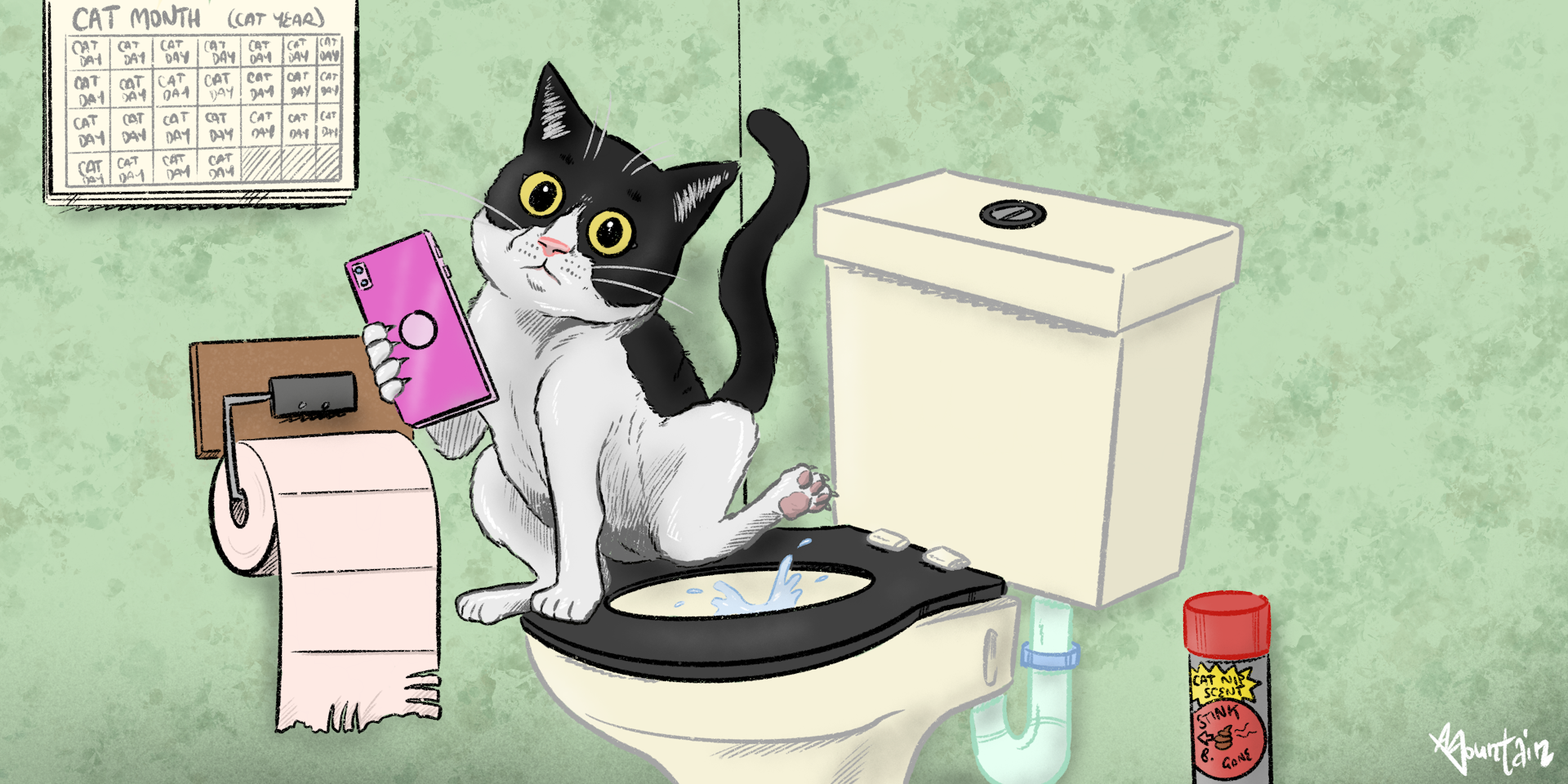Top Reasons to Avoid Flushing Animal Waste Down the Toilet
Top Reasons to Avoid Flushing Animal Waste Down the Toilet
Blog Article
Just how do you feel on the subject of 4 Reasons Why Dog Poop Cleanup is Important?

When it concerns throwing away waste, particularly animal waste, many individuals commonly resort to the practical option of flushing it down the bathroom. Nonetheless, this seemingly easy remedy can have major consequences for the atmosphere and public health. In this short article, we'll explore why flushing animal waste down the toilet is a poor idea and offer alternative techniques for correct disposal.
Introduction
Correct waste disposal is vital for maintaining ecological sustainability and public health. While it might appear safe to flush animal waste down the commode, it can bring about various concerns, both for the environment and human wellness.
Dangers of flushing animal waste
Environmental impact
Purging pet waste presents harmful microorganisms and virus into waterways, which can adversely influence water environments. These pathogens can infect water sources and harm aquatic life, disrupting fragile communities.
Public health concerns
Pet waste includes harmful microorganisms such as E. coli and Salmonella, which can posture serious health threats to humans. Flushing animal waste down the bathroom can pollute water materials, resulting in the spread of diseases and infections.
Alternatives to flushing
Rather than purging pet waste down the toilet, there are a number of different disposal methods that are much more eco-friendly and sanitary.
Composting
Composting pet waste is an eco-friendly method to dispose of it. By composting, organic matter is broken down into nutrient-rich dirt, which can be made use of to feed gardens and plants.
Landfill disposal
Throwing away pet waste in a garbage dump is another option. While not as environmentally friendly as composting, it is a safer choice to flushing, as it protects against the contamination of water resources.
Animal garbage disposal systems
There are specialized pet dog waste disposal systems available that securely and hygienically get rid of pet waste. These systems often utilize enzymes to break down waste and eliminate smells.
Actions to appropriate pet waste disposal
To make certain proper disposal of animal waste, follow these steps:
Scooping and bagging waste
Regularly scoop and bag pet waste using eco-friendly bags. This prevents waste from polluting the atmosphere.
Making use of designated waste bins
Dispose of bagged animal waste in designated waste bins, such as garden compost containers or landfill bins. Avoid flushing it down the commode in any way prices.
Cleaning up can and family pet locations routinely
Regularly tidy can and pet areas to prevent the buildup of waste and microorganisms. Use pet-safe cleaning products to maintain health.
Advantages of appropriate disposal methods
Taking on appropriate get more info disposal methods for pet waste provides numerous benefits:
Reduced environmental pollution
Correct disposal methods reduce the danger of environmental pollution, safeguarding rivers and environments from contamination
Minimized danger of water contamination.
By staying clear of flushing animal waste down the bathroom, the threat of water contamination is considerably lowered, protecting public health.
Improved sanitation and hygiene
Proper disposal techniques promote far better hygiene and health, developing a safer environment for both humans and animals.
Conclusion
In conclusion, flushing pet waste down the commode is harmful to the atmosphere and public health. By adopting alternate disposal methods and complying with correct waste management methods, we can decrease the negative impact of pet waste and add to a cleaner, healthier world.
Why You Should Never Flush Animal Waste Down the Toilet
As a pet and property owner, cleaning up after your furry friends is important to ensure your property is clean and disinfected. However, when disposing of animal waste, many opt to flush it down the toilet. After all, it seems like the most convenient option, right? Unfortunately, this common practice can actually have harmful effects on your plumbing system and the environment.
What Comprises Animal Waste?
Animal waste refers to bodily excretions such as feces and urine from pets such as cats, dogs, and rabbits. These excretions contain bacteria, pathogens, viruses, and parasites that can harm humans and the environment. Some types of animal waste, such as feces from dogs and cats fed on processed foods, may contain harmful bacteria like E.coli, salmonella, and campylobacter. Flushing this type of waste down the toilet could pollute waterways and destroy the ecosystem.
Environmental and Physical Dangers of Flushing Pet Waste
In the environment, flushing waste can contaminate waterways, killing aquatic life and harming the ecosystem. The waste that might be considered flushing down the toilet could also adversely impact your plumbing and sewage systems in the following ways.
End Up in Sewage Treatment Plants
Flushing pet waste down the toilet can have a detrimental impact on sewage treatment plants and the overall water quality. Pet waste contains harmful bacteria and pathogens that, if not properly treated, can contaminate water sources and pose a risk to aquatic life and human health. Sewage treatment plants are designed to handle human waste and other biodegradable materials, but they are not equipped to effectively treat the bacteria and pathogens present in pet waste.
Clog Pipes
Density: Animal waste is often dense and easily gets stuck in pipes. Unlike human waste, which is designed to be flushed away smoothly, pet waste contains elements like grass, dirt, raw hide, hair, and other materials that can create blockages in the plumbing system. Potential damage: Flushing pet waste, even in small amounts over time, can lead to costly repairs. It can cause cracked pipes and other plumbing issues, resulting in the need for professional intervention. Public and private waste management systems: Flushed pet waste can also cause problems in public and private waste management systems. It can overload septic tanks and other sewage treatment systems, leading to backups. Leading to Untreated Sewage Overflows
Flushing excessive amounts of pet waste can overwhelm the sewer system's capacity to handle the additional waste load. This can cause backups and overflows, leading to untreated sewage entering waterways.
Additionally, pet waste, particularly when combined with other non-biodegradable items like wipes or litter, can create sewer pipe blockages. These blockages prevent the proper flow of wastewater and can cause sewage to back up and overflow.
Flushing Pet Waste Could Affect Human Health
In addition to environmental hazards, flushing pet waste down the toilet could be detrimental to human health. The bacteria found in animal excrement exposed to sewage might cause infectious diseases. For that reason, people whose immune systems have been weakened by particular diseases, medical treatments, or age can be in danger of disease from even the smallest bacterial exposure in contaminated water.
Alternative Ways to Responsibly Disposing of Pet Waste
The most secure and sustainable way of disposing of pet waste is by composting it. Cat litter can be useful fertilizer for your garden if you compost it safely and appropriately. However, it is essential to do this correctly to prevent exposure to the dangerous parasites that the waste might have. It is best to research before composting your pet waste, as certain toxins can persist even after the composting process is finished.
Another safe way to dispose of pet waste is by bagging and throwing it in the trash bin. Here, it is crucial to choose the appropriate bag for disposal, such as biodegradable bags that quickly decompose, reducing the carbon footprint of landfills.

As a passionate reader on 4 Reasons Why Dog Poop Cleanup is Important, I was thinking sharing that excerpt was smart. Loved our content? Please share it. Let another person discover it. We appreciate your readership.
Schedule Estimate Report this page